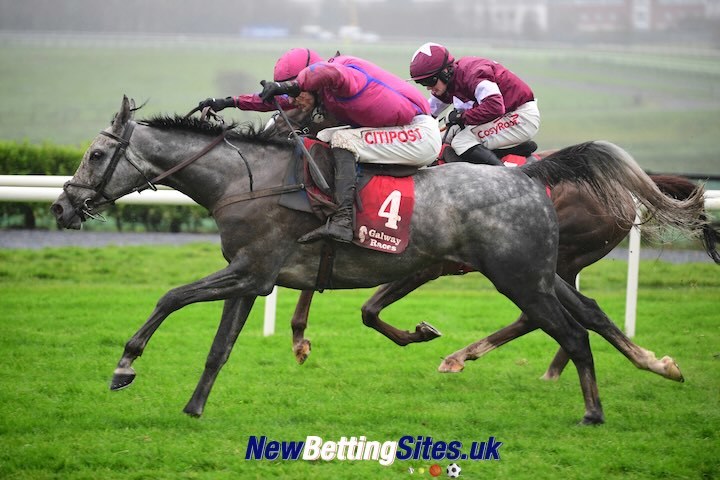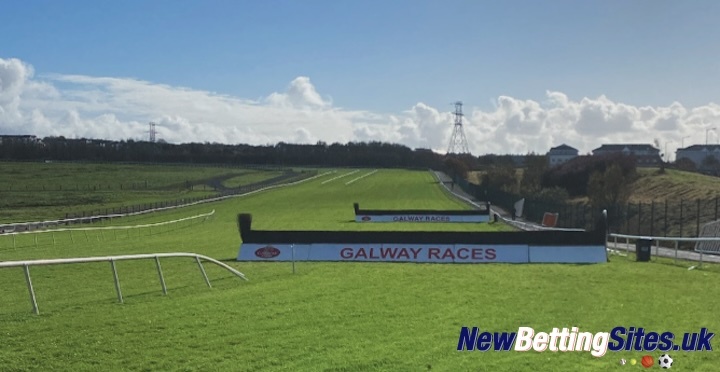Equine Excellence on Emerald Isle: A Guide to Irish Racing

Few nations can rival Ireland for its love of horse racing. That passion shouldn’t come as too much of a surprise. Early reports suggest National Hunt racing was born in Ireland during the 18th century. At that time the runners would, quite literally, race from one church steeple to another – hence the term steeplechasing.
Fast forward to the present day, and horse racing remains a cornerstone of Irish culture. Providing gainful employment to around 15,000 industry workers and capturing the imagination of millions, Irish racing generates an estimated €1 billion per year.
Moving away from the mass appeal and financial figures, Irish racing is quite simply the best in the world. Whether it be the exploits of Willie Mullins over jumps or the all-conquering Aidan O’Brien on the flat, the nation has provided an impressive list of legendary runners and shows no sign of slowing down.
The Structure of Horse Racing in Ireland
Much like its British counterpart, Irish horse racing boasts flat and National Hunt (jumps) categories.
Mirroring the British system, both codes are based on a rating system, which assigns a numerical performance-based value to every runner. The British Horseracing Authority carries out this task in Britain, and in Ireland, the task falls to the Irish Horseracing Regulatory Board (IHRB).
The Irish Rating System serves two key purposes:
- Ranking Horses - In a sport such as football, determining the best side is often as simple as viewing the league table at the end of the season. Racing isn’t so straightforward. By employing a rating system, fans can compare horses from the same generation and stars of the past
- Framing Handicap Races - Handicap races aim to provide all runners with a (theoretically) equal chance of winning. To level the playing field, more talented horses must carry more weight than their inferior rivals. The rating system determines exactly how much this additional weight should be. In the rating system, 1 rating point equals 1lb in weight. Therefore, if a 90 rated runner carries 9st12lb, then an 80-rated rival would carry 9st2lb
So far, there isn’t much difference between British and Irish racing. However, whilst the handicapping methods run on almost identical lines, the race classification systems differ slightly.
Flat Racing in Ireland: Classifications and Distinctions
The core Irish flat season begins in mid-March and ends in November. 22 turf courses and the hugely popular all-weather venue at Dundalk provide the stages.
Race classifications in Ireland largely align with the British system at the higher levels, but there are a few differences lower down the ladder.
Group 1 Races
The pinnacle of the sport. Group 1 events see the crème de la crème lock horns to determine who really is the best of the best. Barring allowances of weight and age, runners are required to carry the same weight in Group 1 affairs. Fillies and mares carry less than colts and geldings due to their smaller size, whilst three-year-olds carry less than their elders due to their relative immaturity. The Irish Derby, Oaks, 1000 Guineas, 2000 Guineas, and Irish Champion Stakes are amongst the most famous Irish Group 1 events. To qualify as a Group 1, the first four finishers must be rated 115+.
Group 2 Races
Requiring an average top four rating of 110 for 3yo+ events and 105 for 2yo contests, Group 2 events come next on the ladder in terms of prestige. In addition to weight for age allowances, Group 2 events may also feature Group 1 and Group 2 winning penalties. Famous Group 2 contests include the Railway Stakes, Futurity Stakes, and Beresford Stakes.
Group 3 and Listed Races
Together with Group 1 and 2 events, Group 3 and Listed contests make up what is known as the racing “Pattern”. Pattern events all boast international significance and contribute to a steady programme of events for the more talented runners in training. Group 3 events require a top-four average rating of 105 (3yo+) and 100 (2yo). At Listed level, this drops to 90. The Ballysax Stakes, Saval Beg Stakes, and Phoenix Sprint Stakes are all Group 3 affairs, whilst the Vintage Crop Stakes is one of Ireland’s most famous Listed events.
Handicaps and Other Race Types
Races at Listed level and above provide the quality, but most Irish races fall into the handicapping category. In Britain, handicaps follow a Class system – beginning at Class 1 for the highest quality events and ending at Class 6 for the low-level fare.
However, in Ireland, handicap quality is revealed using rating bands, e.g., a 55-75 handicap indicates a race open to all runners rated between 55 and 75. In common with the British System, the biggest handicaps fall under the “Premier Handicap” banner.
Other flat race types include:
- Maiden Races - Restricted to horses yet to win a race.
- Nursery Handicaps - Handicap contests restricted to two-year-olds runners
- Claiming and Selling Races - Horses are sold post-race, with weights linked to the asking prices declared before the race. The higher the asking price, the more weight the horse must carry.
- Auction and Median Auction Races - Limited to horses sold at auction for an amount at or below a specified value. Weights may be determined by the price of the horse - the higher the price, the higher the weight carried.
- Amateur and Apprentice Races - Designed for non-professional jockeys
National Hunt Racing in Ireland: Steeplechasing and Hurdles
Steeped in heritage, the legions of Irish fans who make the trek to Cheltenham each year are a testament to the enduring appeal of the jumping game. The core Irish jumps season begins in November and ends in April.
Irish National Hunt racing features three main types of contest:
- Hurdles - Feature thin obstacles of around 3ft in height. Providing a relatively easy jumping challenge, most runners begin in hurdles before progressing to chases
- Chases - Feature sturdier obstacles of around 4ft6in in height which present a more considerable test than hurdles
- National Hunt Flat Races - Also known as Bumpers, these races feature no obstacles but are contested by runners from National Hunt yards
Irish jumps racing takes place at 23 tracks, including the famous Punchestown, Galway, and Leopardstown. In common with the flat, the contests held at these venues fall into a range of categories:

Grade 1 to Grade 3 Races
- Grade 1 - The summit of the jumps racing mountain, Grade 1 events are where the champions of the sport are crowned and include the Irish Gold Cup, Punchestown Gold Cup, and Savills Chase. In common with the premier Group 1 events on the flat, Grade 1 events are run off level weights, with the exception of penalties relating to the age and sex of the runners
- Grade 2 - Just below the top level, Grade 2 events introduce penalties for recent wins in Grade 1 or Grade 2 company
- Grade 3 and Listed - These events provide a stepping stone between handicap and top-level company, and again feature penalties for wins at a specified level. In Britain, some handicaps fall into the Grade 3 and Listed categories, but this isn’t the case in Ireland
Handicaps and Novice Races
Handicap chases and hurdles follow the same rating methodology as flat racing and are ranked using a combination of Grades and rating bands. Grade A, B, and C handicaps represent the highest-quality events. Below this, handicaps are labelled using rating bands.
Novice races cater to horses in their first season over hurdles or fences. Variations include:
- Maiden Hurdle/Chases - Open to those without a previous win in the relevant sphere. Having won one Maiden event, a horse may not run in another.
- Novice Hurdle/Chase - For runners who have not won a race in the relevant sphere before the start of the current season. Win or lose, runners may compete in further novice events until the end of their first season.
- Novice Handicaps - A novice race run under handicap conditions.
Other types of Irish National Hunt Races include:
- Maiden - Can be a hurdle or chase and is restricted to a runner who has not previously won in that sphere
- Juvenile Hurdle - A hurdle event restricted to four year old runners
- Hunter Chase - For runners who have participated in a recognised hunt during the current year. These races are restricted to amateur jockeys
- Conditional Jockeys Race - Restricted to inexperienced riders who may have professional aspirations but are in the early stages of their career
- Claiming Race - Follow the same system as the flat, whereby the runners are made available for sale after the race. The weights carried are determined by the pre-race asking prices of the runners
Best 10 New Bookmakers
 |
£25 | SIGN UP HERE |
|
18+ New UK customers. Bet £10 on accas with 4+ legs, min odds 3/1 (4.0). Get 4x £5 Free Bets and 50 Free Spins, valid for 7 days on selected bets and games only. T&Cs apply. BeGambleAware.org |
||
 |
£10 | SIGN UP HERE |
|
#ad. 18+. Gamble Responsibly. Gambleaware.org. New customers only. £10 in real money. Bets placed on sports at odds of 2.00 ore more to qualify. Bets must be placed 24 hours within of registration. £10 free bets must be wagered on sports. Cashback is cash without restrictions. - Full Terms Apply |
||
 |
£10 | SIGN UP HERE |
|
T&Cs apply. 18+ New customers only. You must place a single win-only bet of £10 or more with odds of evens (2.00) or greater to qualify. Money back as £10 in free bets. Free bet is credited once the qualifying bet has settled. Must use code B10G10 when creating an account. |
||
 |
£40 | SIGN UP HERE |
|
New customers online only. Use code B10G40 on registration. Place a £10 min qualifying bet at 1/1 (2.0) odds or higher across sports or racing. Get £20 Tote Credit, £10 Free Sports Bet, and 50 Free Spins on Big Bass Bonanza within 48 hours. Free bets and Tote Credit expire in 7 days. One per customer. UK & ROI only. 18+. Full T&Cs at Gambleaware.org. |
||
 |
0 | SIGN UP HERE |
| |
£10 | SIGN UP HERE |
|
Wager a minimum £20 on slots and receive 50 Free Spins on BIG BASS SPLASH |
||
 |
£30 | SIGN UP HERE |
|
Only available to new verified customers residing in the UK. Place a first bet (min. £10). Get £30 freebet if you lose. T&Cs apply. |
||
 |
£10 | SIGN UP HERE |
|
18+. New Customers Only. Max one £10 Free Bet. Qualifying bets at Odds of 1/1(2.00) or greater. Paid as Bonus Token with Min 4/5(180) Odds Req. Skrill, Neteller & Paypal not eligible.BeGambleAware.org. T&Cs apply. |
||
 |
£10 | SIGN UP HERE |
|
New customers only. £10 in real money. Bets placed on sports at odds of 2.00 or more to qualify. Bets must be placed within 24 hours of registration. £10 free bets must be wagered on sports. Full terms below. Gambling can be addictive, play responsibly, 18+. |
||
 |
£40 | SIGN UP HERE |
|
New customers only. 7 days to place qualifying bet of £10 at 1/1 (2.0) to receive 4 x £10 Free Bets: 1 x £10 football, 1 x £10 horse racing & 2 x £10 Bet Builders. Free Bets cannot be used on e-sports and non UK/IE horse racing. 7 day expiry. Exclusions apply. Stake not returned T&Cs apply. 18+ GambleAware.org |
||
